OpenMusic Tutorials
Prev| Chapter 16. Classes and Inheritance| Next
Tutorial 43: Creating a Generic Function II
A musical approach
Topics
Using musical classes as data types for methods
Key Modules Used
x-append, sort., remove-dup, Note, Chord
The Concept:
As we saw in the previous tutorial, a function may contain any number of
methods determining its behavior. Each method
corresponds to a set of data types at the function’s inputs, and is
automatically called when these data types are present. Any class can be used
as a data type, it turns out. In this tutorial we will add functionality to
our myplus function, defined in the previous tutorial, allowing it to ‘add’
Chords and Notes by adding additional
methods.
Adding New Methods
We will define the addition operation for the NOTE class as adding two notes
to produce a diad. Two notes will form an interval. In order to do this we
will again use classes from the Packages folder in the Workspace. This time,
however, we will open the Music:Score package:
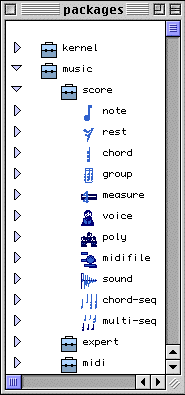
Open up myplus and select File->New Method. The usual method editor window
comes up. This time, drag the Note class icon twice from the
Packages folder. Notice these inputs have many outputs:
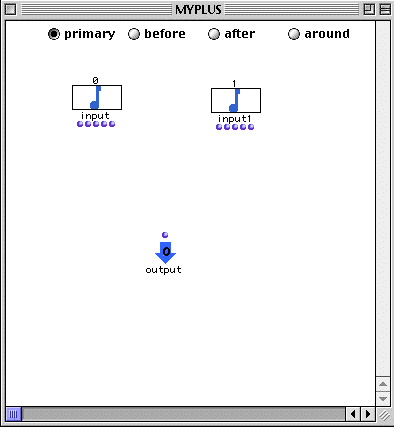
Each of these outputs refers to a slot of the class.
They give us access not only to the _self_ output of the
Note, but to its constituent slots _midic_ , _vel_ ,
_dur_ , and _chan_.
If we open the Note class in the Packages folder, we see
these slots:
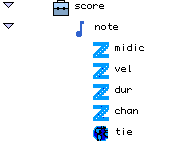
Notice that the _self_ slot is not shown- this is because it is always
present most classes. (The Note icon could be taken to
represent the _self_ slot, in fact. You also see extra slots that don’t
appear in the graphic representation of the class when the class is used in
the patch: _tie_ and _symb-info_. These slots are used when the
Note becomes part of a larger object; we won’t need to
manipulate them directly.
So, in order to combine the pitches of the two notes, we will create a list
with x-append. We could simply pass this list to the
output, but it would make more sense for myplus to return a musical object
in this case, so we give the values to the _midic_ input of a
Chord object, and pass the entire object to the output (via
the _self_ output).
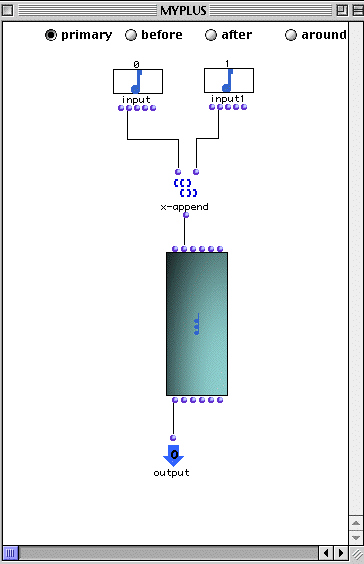
We may use our newly edited function:
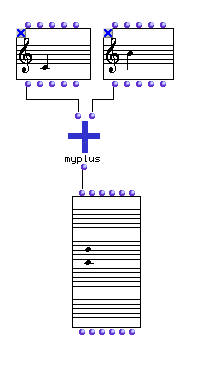
Using two Notes, we connect them to myplus and get back a
Chord:
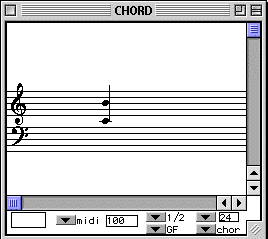
Now let’s create a method for two Chord objects. This method will combine them into a single object, without any repretition of pitches, and will sort all notes from lowest to highest.
First, we create the new method and drag the Chord classes
from the Packages folder to the inputs. We connect the _lmidic_ output of
both to the x-append function, which combines the midics
into a single list. Then we connect that to sort. (note the
period at the end of the name) which will arrange them, by default, in
ascending order. Next, they are passed to remove-dup,
which, by default, removes duplicate elements from the list. Now we’re ready
to put our filtered, sorted list of midics into the _lmidic_ input of a
Chord object, and on to the output.
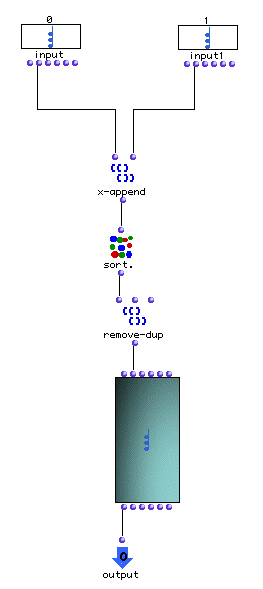
We can now use the new method: A Chord
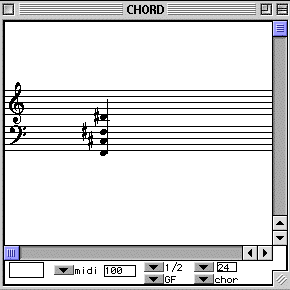
and second Chord:
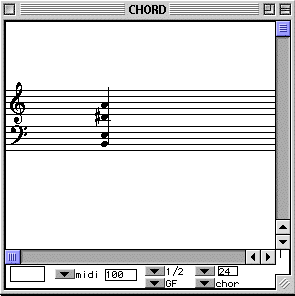
…are connected to myplus and the output passed to a third
Chord object:
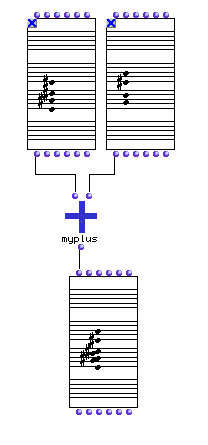
The resulting chord, viewed in order mode:
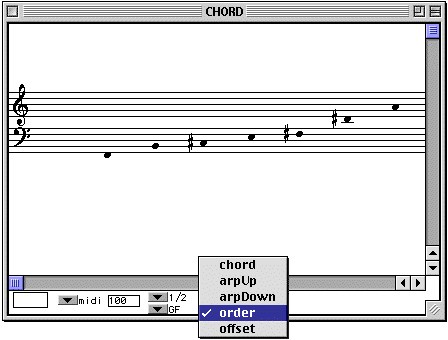
Prev| Home| Next
—|—|—
Tutorial 42: Creating a Generic Function I| Up| Classes
and Inheritance